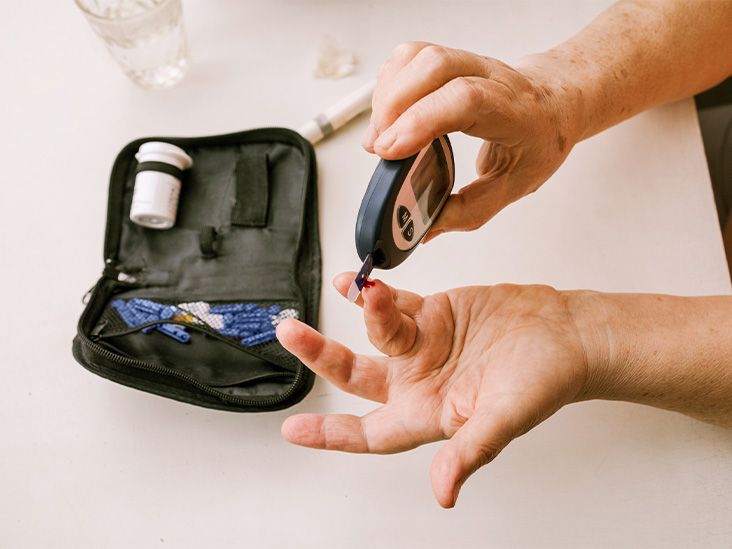Ice baths may have several health benefits, including helping to reduce muscle pain and inflammation and improving mood and cognitive ability.
Ice baths involve immersing the body in cold water. Athletes and fitness enthusiasts sometimes use the technique after physical activity.
However, the technique has risks, especially for people with underlying health conditions, and can lead to cold shock or hypothermia.
Some research suggests that ice baths may benefit physical and mental well-being in other ways, but study results have been inconsistent.
This article looks at what an ice bath is, what the potential benefits and risks are, who should avoid ice baths, and when to contact a doctor.

An ice bath is a type of cold-water immersion (CWI) therapy in which a person immerses their body in a bath filled with ice and very cold water. Ice bath temperatures typically range from
Other examples of CWI are cold-water swimming, cold showering, and cold plunges, which involve short immersion in a pool or a natural body of very cold water.
Some studies suggest that ice baths may offer various health benefits, including those below.
Improved muscle recovery
A 2022 review includes several studies that suggest CWI therapy after physical activity may have the following effects on muscles:
- reducing muscle soreness
- improving muscle recovery
- helping to prevent injuries
Researchers believe that CWI may cause these potential benefits by decreasing blood flow and lowering metabolic activity in the muscles.
This may reduce the levels of biomarkers in the body that indicate muscle damage, stress, and inflammation, such as creatine kinase and C-reactive protein.
Reduced inflammation
Inflammation is part of the body’s response to illness or injury. Muscle damage that occurs during exercise is a form of inflammation.
In the short term, inflammation can be helpful for healing. However, high levels or prolonged periods of inflammation can be harmful.
A
More large-scale, reliable clinical studies and long-term data are necessary to determine how ice baths affect inflammation.
Improved immune function
A 2020 review notes that cold-water swimming may boost immune activity, increasing levels of certain white blood cells.
Some previous studies have also found that people who practice cold-water swimming have fewer respiratory tract infections, with one study showing 40% lower incidence rates.
However,
More research is necessary to determine whether CWI has benefits for immunity.
Improved mental health and cognitive ability
Some studies suggest that CWI therapy may improve mood and cognitive ability and reduce symptoms of mental health conditions. However, others report no improvements.
For example, people who took part in a 2023 study on CWI therapy reported feeling more:
- inspired
- active
- alert
- attentive
- proud
They also reported reductions in symptoms of mental health conditions, including:
- distress
- nervousness
- low energy levels
- low motivation
The researchers suggest that the potential cognitive benefits of CWI may relate to connectivity changes in brain networks.
But while some studies included in a
Ice baths and other types of CWI have several risks, some of which are serious.
According to the National Center for Cold Water Safety, sudden immersion in water colder than 60°F (15.5°C) can kill a person in less than 1 minute. Research on CWI
The risks include:
- Cold shock: When a person’s skin makes contact with cold water, they can experience cold shock, which causes an involuntary and
rapid increaseTrusted Source in heart rate, blood pressure, and breathing. The shock can impair a person’s ability to think and to swim and can cause gasping and panic. If a person gasps while under water, they may risk drowning. - Heart problems: Cold exposure causes the blood vessels to constrict and can force the heart to work harder. In people with existing heart conditions, this could be dangerous.
- Hypothermia: CWI reduces the body’s temperature rapidly. This may lead to hypothermia, which can affect a person’s ability to move or think properly and can eventually affect organ functioning.
- Nerve and skin damage: Repeated or long exposure to very cold water may result in ice burn or frostbite, which can damage skin tissue and nerves.
The risks of CWI may be especially high for people who have underlying health conditions, such as heart disease or hypertension, or take medications such as beta-blockers.
People who have never tried CWI before should not try ice baths without talking with a doctor first, especially if they have any chronic conditions or take any medications.
People with health conditions that affect the cardiovascular system
- diabetes
- heart disease
- hypertension
- circulatory issues
Even for people who can try ice baths, it is essential to follow safety advice to reduce the risks.
If a person wants to try ice baths, it is important that they prepare properly. This means:
- choosing a time and place for the bath when others will be around
- starting with warmer temperatures and gradually decreasing the temperature
- having the necessary equipment, such as a thermometer and a timer
- having a plan for getting warm afterward
Gradually getting the body used to colder temperatures may help reduce cold shock, and having people around who can hear if someone is in distress means help is available if something goes wrong.
Once a plan is in place, a person can follow these steps:
- Run water into the bath until it reaches the desired depth and temperature. Remember that adding ice will mean that the temperature continues to get colder as the ice chills the water.
- Slowly submerge the body in the bath and closely monitor the body’s response.
- Set a timer to ensure that a person does not spend too long in the bath. Some research indicates that spending 11 to 15 minutes in an ice bath is the most beneficial for fatigue recovery after physical activity. However, a person should start with shorter ice baths and get out of the bath if they feel the need to.
- Get out of the water, dry the skin, and get warm again. It may be helpful to use a heated towel, change into warm clothes, or have a warm drink.
A person may want to consult a doctor before taking an ice bath or trying any method of CWI.
A person should dial 911 if they or someone else experiences any of the following effects due to cold exposure:
- rapid breathing or gasping
- water inhalation
- difficulty coordinating their movements
- problems with balance or vertigo
- dizziness or feeling faint
- skin pain, blistering, or color changes
- cold, pale, or blue-tinged skin
- intense shivering or shivering that stops while other symptoms get worse
- confusion
- drowsiness
- loss of consciousness
If the person is still in the bath, a 911 call responder can tell others what to do until an ambulance arrives.
Some research suggests that ice baths offer various potential benefits for physical and mental health. These include muscle recovery, reduced inflammation, increased immune function, and improved mood.
However, evidence for these benefits is mixed, and not all studies have reached the same conclusions.
Ice baths and other types of cold-water immersion have risks, including cold shock and hypothermia. A person should consider consulting a doctor before taking an ice bath, especially if they have any preexisting conditions.


